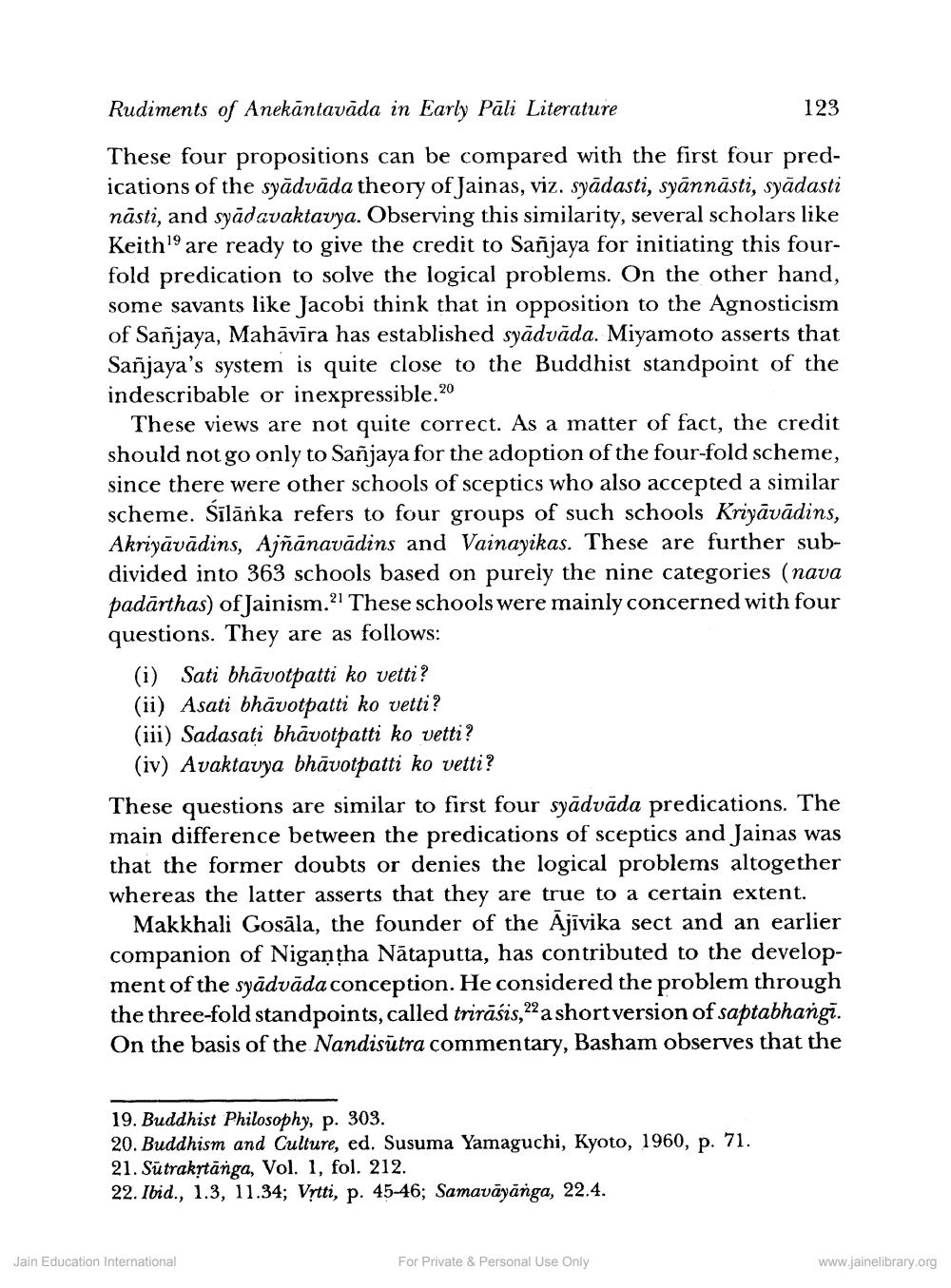________________
Rudiments of Anekāntavāda in Early Pali Literature
These four propositions can be compared with the first four predications of the syādvāda theory of Jainas, viz. syādasti, syānnāsti, syādasti nāsti, and syādavaktavya. Observing this similarity, several scholars like Keith19 are ready to give the credit to Sanjaya for initiating this fourfold predication to solve the logical problems. On the other hand, some savants like Jacobi think that in opposition to the Agnosticism of Sanjaya, Mahāvīra has established syādvāda. Miyamoto asserts that Sanjaya's system is quite close to the Buddhist standpoint of the indescribable or inexpressible.20
These views are not quite correct. As a matter of fact, the credit should not go only to Sañjaya for the adoption of the four-fold scheme, since there were other schools of sceptics who also accepted a similar scheme. Śīlānka refers to four groups of such schools Kriyāvādins, Akriyāvādins, Ajñānavādins and Vainayikas. These are further subdivided into 363 schools based on purely the nine categories (nava padarthas) of Jainism.21 These schools were mainly concerned with four questions. They are as follows:
(i) Sati bhāvotpatti ko vetti? (ii) Asati bhāvotpatti ko vetti? (iii) Sadasați bhāvotpatti ko vetti? (iv) Avaktavya bhāvotpatti ko vetti?
These questions are similar to first four syādvāda predications. The main difference between the predications of sceptics and Jainas was that the former doubts or denies the logical problems altogether whereas the latter asserts that they are true to a certain extent.
Makkhali Gosāla, the founder of the Ajivika sect and an earlier companion of Nigantha Nätaputta, has contributed to the development of the syādvāda conception. He considered the problem through the three-fold standpoints, called trirasis, 22 a short version of saptabhangi. On the basis of the Nandisutra commentary, Basham observes that the
19. Buddhist Philosophy, p. 303.
20. Buddhism and Culture, ed. Susuma Yamaguchi, Kyoto, 1960, p. 71. 21. Sutrakṛtānga, Vol. 1, fol. 212.
22. Ibid., 1.3, 11.34; Vṛtti, p. 45-46; Samavāyānga, 22.4.
123
Jain Education International
For Private & Personal Use Only
www.jainelibrary.org




